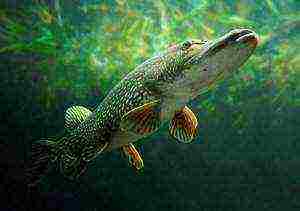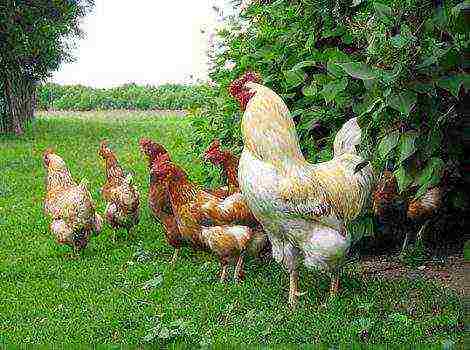Content [show]
We today almost invariably associate the name of jasmine with the popular and fairly common garden shrub chubushnik. But in fact, this plant has nothing to do with the representatives of the legendary fragrant jasmine. And a similar scent should not be misleading. Jasmines are inimitably beautiful indoor lianas, evergreen, elegant, abundantly blooming, captivating with their simple nobility and fragrant flowers. Being a plant surprisingly graceful, real jasmine cannot boast of great endurance and even more frost resistance, and we grow it exclusively as a greenhouse or indoor plant. But on the other hand, jasmines always become a real pride in the collection. To admire them, you need to provide plants with not so easy care. And the selection of growing conditions for this exotic handsome man does not diminish the hassle.
Jasminum mesnyi
Real jasmines and their elegant beauty
Beautiful jasmines, during their flowering, seem almost unearthly beauties. Formed on various supports or freely growing, but invariably elegant, they are a kind of canon of impeccable beauty. There is a lot of confusion with the name "jasmine". And today, some gardeners believe that indoor or greenhouse and garden jasmines are related plants, and they are all genuine. But in fact, the shrub that is grown in our gardens under the name of jasmine has a completely different origin. Chubushnik, which is customary and even fashionable in our country to call jasmine (even some large garden centers do not hesitate to give out a nickname for a generic name), belongs to the Kamnelomkovy family and can only be called jasmine by mistake. In fact, a pleasantly strong scent, similar to that of the legendary jasmine, is the only trait that unites greenhouse plants with garden imposters. But even if you compare the aromas of the two plants, then the difference in shades and nuances becomes obvious.And the white fragrant flowers of the chubushnik, which is grown in parks and gardens, are in no way similar to the perennial evergreen shrub that belongs to real jasmine.
Real or genuine jasmines represent the Olive family. And it is easy to guess about their belonging by the foliage of the plant and the forms of growth. Without exception, all jasmines are evergreen shrubs belonging to the number of climbing vines. Thin and surprisingly flexible, clinging shoots of this plant must be provided with support for the formation of a beautiful and dense bush. The drooping branches are actively developing, quickly braiding and hiding support, due to which, when forming, the plant looks like a lush dense bush (the base that holds all the shoots together is usually almost invisible). It is a typical southern plant found in the tropics and subtropics, the Mediterranean, Australia and South America. Jasmine leaves are very beautiful. Entirely extreme, ideal oval-oblong shape with a pointed tip, they sit on short petioles in pairs, forming a very spectacular classic evergreen crown. Jasmine flowers seem simple and noble at the same time. Tubular, simple or double, they have deeply dissected, wide-open corollas, divided into 6 petals, under which the cylindrical tube is practically invisible. Axillary flowers are collected in the inflorescence scutes located in the leaf axils. The color palette of flowers, despite the fact that shining white and cream shades have long been considered classic and have become a symbol of all jasmines, also includes yellow, pink variations in a wide variety of colors.
Jasmine multiflorous (Jasminum polyanthum)
In room culture, several types of jasmine have spread, as a rule, differing in flowering and very similar in structure of bushes, type of leaves and shoots. The most popular houseplants include the following types of real jasmine:
Jasmine multiflorous (Jasminum polyanthum), distinguished by its strong branching from other species. It is a magnificent climbing shrub. It reaches a height of 1.5-2 m. Oval, with a pointed edge, the leaves are alternately arranged, flaunting a slightly wavy edge and a dark green color. Numerous tubular flowers, the limb of which is divided into 5 lobes, are collected in loose apical inflorescences. The fact that the brightly colored pink buds turn white when blooming adds a special charm to this species. But the most popular multi-flowered jasmine aroma is stronger than any other species (easily felt even from a distance). This jasmine blooms from February to August. Today, this species also includes the thinnest Jasmine (Jasminum gracillimum), previously distinguished as an independent species, although outwardly it differs slightly from the basic form. This is a compact liana with very thin, necessarily drooping shoots, very simple leaves up to 3.5 cm long with a heart-shaped base, edging below and a more unusual color of greenery - light green. But the main difference is in the flowers. The former thinnest, and today is not even considered as a separate form of multi-flowered jasmine, flowers are collected in the umbrellas of inflorescences, their corolla is divided into 8 pointed lanceolate "petals". The diameter of the flowers of multifloral jasmine reaches 2.5 cm and blooms in January-March.
Jasmine multiflorous (Jasminum polyanthum)
Jasmine large-flowered (Jasminum grandiflorum) is a majestic, in nature reaching 10 m in height liana with absolutely naked shoots. Cirrus, opposite leaves differ from other species not only in dark color, but also in an elliptical shape with a pointed tip. Flowers are collected at the tops of the shoots in umbrellas in an amount of up to 10 pieces, appear in a fairly large amount evenly from June to October. In this type of jasmine, the limb is divided into 5 petals, and the flowers themselves are very fragrant and snow-white.
Jasmine grandiflorum (Jasminum grandiflorum)
Jasmine Bissa (Jasminum beesianum) - an evergreen shrub vine with shoots covered with longitudinal grooves up to 2 m long.Simple, lanceolate, opposite leaves reach 5 cm in length and stand out with a light, almost invisible edge and a rich dark green color, brighter than the rest species. The flowers are pink or dark pink, very fragrant, bloom at the tops of the shoots, gathering in whorls of up to 3 pcs. The flowers of this species reach 2 cm in diameter. It blooms in May, for a shorter period of time than other species.
Jasminum beesianum
Jasmine (Jasminum nudiflorum) differs from other types of indoor jasmine in weaker branching, rare foliage of graceful shoots. The leaves are small, colored bright green and, as a rule, fall off for the winter or remain in very small quantities. The color of the flowers is dazzling yellow, they are quite large, more than 3 cm in diameter, they bloom in the axils of the leaves only one at a time, but they appear from January to April and along the entire length of the stem. This type of jasmine has received the eloquent nickname “winter jasmine”.
Jasmine (Jasminum nudiflorum)
Jasmine Sambac (Jasminum sambac) - the most unpretentious, easy-to-grow type of jasmine, which is suitable for a warm winter. In nature, shoots grow up to 6 m in length. Its shoots, unlike other jasmines, are pubescent and woody. Opposite leaves sometimes gather in whorls of 3 pieces, ovoid, up to 10 cm in length. The rounded base is almost imperceptible, but the top can be either pointed or blunt. Leaf cover ranges from glossy to slightly drooping. Very fragrant large flowers are collected in clusters of 3-5 inflorescences, most often semi-double or double, painted exclusively in white. This jasmine bloom lasts from March to October and is unusually long. In appearance, double flowers resemble camellias or semi-double roses rather than other jasmines.
Jasminum sambac
Home care for indoor jasmine
This indoor liana "in payment" for an unprecedentedly strong aroma, abundant flowering and beauty of greenery requires a considerable price. Jasmine is not even a medium-demanding houseplant. This is not the most persistent and rather capricious culture, which, even with standard careful care, can still suffer and die. And sometimes it is very difficult to find the reason for the wilting of jasmine. For jasmine, you need to strictly control the growing conditions, monitor the stability of the environment, carefully check the degree of soil moisture and air humidity. The slightest violation of the parameters that are comfortable for the plant, even not obvious at first glance, can lead to serious consequences. So this magnificent classic plant can only be advised by experienced flower growers who are able to sensitively notice and respond in a timely manner to any problems.
Lighting for jasmine
Jasmine, like most tropical plants prone to abundant flowering, belongs to light-loving crops. It not only needs good lighting for the production of a large number of flowers over a long period of time, but also for the normal development of shoots and leaves. At the same time, jasmine cannot stand direct sunlight, and southern, sunny locations in the rooms will not be comfortable for him. It is best to place jasmine on the eastern and western windowsills or in locations similar to them in terms of lighting activity in the interior itself. With this location, there is no need to shield the vine from the midday sun with a screen, even during the summer. Jasmine cannot stand artificial lighting, like any shading. For the dormant period that most jasmines have at the end of autumn, plants do not need lighting correction, and some species even partially shed their foliage.
Jasmine multiflorous (Jasminum polyanthum)
Comfortable temperature
Jasmine is relatively undemanding to temperatures. They feel quite comfortable in normal room temperature ranges; content at 21-25 degrees of heat or slightly higher during the entire stage of active development will be quite comfortable for jasmines. Dropping temperatures below 16 degrees in summer or spring can significantly harm the plant. As for the wintering period, different types of jasmine need to be kept in different conditions. Warm wintering does not affect the abundance of flowering only in Sambac jasmine, which prefers to spend the entire dormant period at a temperature of 17 to 18 degrees, with a maximum allowable temperature of 20 degrees and a minimum of 16 degrees. All other types of jasmine bloom profusely only if they are kept cool during the entire pre-flowering phase. The optimal temperature range is from 8 to 10 degrees. Lowering to 6 degrees can kill jasmine. If jasmine is kept warm in winter, you can still achieve a fairly spectacular flowering, but not abundant and short. With such a wintering, it is necessary to adjust the care and maintain high air humidity in order for the jasmine to somehow bloom in the next year.
Watering and air humidity
The intensity of watering for jasmine directly depends on the growth rate, the stage at which the plant is. In the spring-summer period, all jasmines need quite intense and plentiful treatments. Watering is carried out after the top layer of the substrate dries up and does not allow the soil to completely dry out or become waterlogged. A strategy with constant control of the moisture content of the soil is also ideal from the point of view that in this way a more stable environment is created for the jasmine. In the fall and winter, especially during cool wintering, watering for jasmines should be as careful as possible. Excessive waterlogging of the substrate must not be allowed. It is the lower humidity that is the basis of care, which is responsible for the abundant flowering. Even if jasmine is kept warm, then watering must be reduced, allowing the middle layer of soil in pots to partially dry out, maintaining only a slight moisture content of the substrate. At the same time, it is necessary to reduce watering at least a month in advance, gradually transferring jasmine to a "cautious" mode.
Particular attention should be paid to the quality of the water. Jasmine needs watering not only with soft and settled, but also slightly lukewarm water, this plant does not really like the hypothermia of the substrate. For jasmine, it is best to use rainwater, boiled or filtered water. Plants tolerate lime extremely poorly and simply choosing a substrate with the right reaction is not enough for jasmine. To compensate for the effect of salts in water on plants, acidified water should be used instead of regular water for watering jasmine 1-3 times a month. It is enough to add a few crystals of citric acid or 4-5 drops of lemon juice to 1 liter of water. If you do not increase the acidity of the substrate and do not take such measures, the plant will develop depressed and bloom poorly.
Without exaggeration, the most difficult thing in caring for jasmine is to ensure the highest possible air humidity. In dry conditions, plants not only do not bloom, but also suffer from pests and diseases, are in a depressed state, gradually dying. At the same time, it is advisable for jasmine to combine several methods of increasing air humidity. They just love spraying, especially in the summer, when the air temperature exceeds optimal values. Daily procedures with soft, settled water from a finely dispersed spray help to maintain the greenery in perfect condition, allow you to achieve the maximum beauty of the crown. During flowering, spraying is not stopped, but they try to prevent water from getting on the flowers, increasing the distance from the plants when spraying.But to maintain optimal humidity, it is better to supplement the classic procedures with the installation of humidifiers or their artisanal counterparts, for example, pallets with wet moss or pebbles under a pot of jasmine itself. During the cool wintering, jasmine is not sprayed and does not take other measures to increase air humidity. If the plants are kept in warm conditions (except for sambac), then the air humidity must be increased even compared to summer, by resorting to additional measures and making the procedures more frequent. This is the only guarantee that the jasmine will bloom after a dormant period.
Jasmine white (Jasminum officinale)
If the plant is in a depressed state, sheds leaves, dries out, and the presumable reason for this is low air humidity, then it can be placed under a hood for several days (from 4 days to 2 weeks) with daily ventilation.
Jasmine feed
Actively developing jasmine during the stage of rapid vegetation and flowering requires very frequent feeding. For this plant, special complex fertilizers are used, intended for flowering indoor plants. The frequency of feeding during the period of active growth is 1 time per week. Immediately after flowering, feeding is stopped and resumed only when the first signs of the beginning of growth appear. Jasmines do not respond very well to long-acting fertilizers, so it is better for them to prefer the classic method of liquid feeding.
Jasmine pruning
Jasmine, like most evergreen vines, tolerates formation well. And it is by no means reduced to the direction of the shoots along the supports, giving the desired outlines and sizes to the bushes with the help of their fastening and interweaving. For jasmine, a shaping haircut is also perfect, and the more often it is done, the better and more abundantly jasmine blooms. The main pruning of plants is carried out immediately before the start of intensive growth (most often in the spring, but focusing on the flowering time and the stage of vegetation - for jasmines that bloom in winter, haircut is carried out at the beginning of the stage of active development in late autumn), shortening all shoots by 1/3 or 1 / 2 lengths. Thanks to this pruning, the plant produces more young side branches on which buds are formed. When pruning, you must completely remove all elongated shoots, twigs with too small deformed leaves, as well as dry and damaged shoots. Young jasmines, if the shoots do not reach 50-60 cm, only need to pinch the tops for more tillering. Jasmine sambac can be trimmed 2-3 times per year, constantly shortening the branches to form and thicken the crown. The rest of the jasmines can be content with a single haircut.
Flowering jasmine (Jasminum floridum)
Transplant and substrate for jasmine
For jasmine, only a soil mixture with neutral, at least slightly acidic, characteristics (optimal pH - 6.0) is suitable. No less important than the reaction of the soil is its composition. Jasmine can develop only in a loose and high-quality, nutritious soil mixture. When self-mixing the substrate, it is necessary to measure in equal proportions clay-sod soil with deciduous, peat and sand. But it is better to use ready-made universal substrates for jasmine, which are better suited in their texture.
Jasmine transplant is carried out annually only at a very young age. Adult plants are transferred to new containers with a frequency of 2-3 years. The transplant procedure itself is quite simple. The main task is to lay a thick layer of drainage and provide the plants with increased air humidity after this procedure.
It is worth paying attention to the fact that for any jasmine, the diameter of the container cannot be increased by more than 2-3 cm. The presence of too much free soil is the most serious risk of soil acidification for a plant and a violation of the comfortable air and water permeability of the substrate.At the same time, jasmine develops better if its roots almost completely fill the substrate.
Jasmine diseases and pests
The capriciousness of jasmine is fully manifested in the fact that this plant is very vulnerable to pests at the slightest violation of care. Spider mites, aphids, and leaf weevils are found on jasmine. At the same time, pest control should begin as early as possible. It is best to remove damaged shoots and spray the plant prophylactically to prevent the spread of pests. At the same time, as a control measure, it is better to first try biological methods, as well as washing with soapy water, and only in a neglected state resort to insecticides.
Common growing problems:
- shedding leaves when waterlogged, drying out the substrate, drafts, insufficient lighting or low air humidity;
- drying out of the tips of young branches and leaves at low air humidity or drying out of the soil;
- gradual drying of branches with improper selection of water for irrigation, accumulation of alkali in the soil, lack of acidifying irrigation.
Reproduction of indoor jasmine
This delightful flowering vine can be propagated in two vegetative ways. The most popular of these methods is grafting.
It is advisable to cut cuttings exclusively in the spring-summer period and only from non-flowering shoots. For spring cuttings, powerful, lignified, mature shoots are chosen, cutting off the tops with at least 3 internodes. For summer cuttings, young green twigs are used. Plant cuttings must be planted in a mixture of peat and sand or sand and leafy soil, deepening oblique cuts by 1.5-2 cm. After treatment with a growth stimulant, rooting increases several times. A prerequisite for success in cuttings is to maintain a temperature of about 20 degrees Celsius without sudden fluctuations. The release of roots from cuttings takes about 1 month or a little more, after which the plants should be immediately transplanted into small individual containers with a diameter of up to 5 cm. cups. After that, the transplant is carried out annually, and from the 3rd year of cultivation, jasmine is transferred to "adult" conditions with a transplant with a frequency of 2-3 years.
Jasmine multiflorous (Jasminum polyanthum)
Layers of jasmine are obtained by the standard method, wrapping a section of the shoot in the internode with a damp moss or substrate, on which a vertical cut is made. With constant maintenance of moisture in the ground, plants form roots at the cut site after a little over a month.
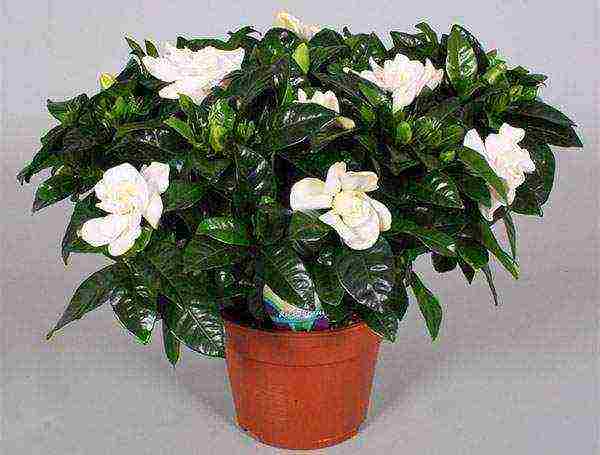 Indoor jasmine is grown in greenhouses and indoors in several varieties. The plant conquers gardeners - lovers with its extraordinary beauty. It differs from other flowers in its constant bright green color of leaves and stem, abundant year-round flowering and aroma. To grow indoor jasmine at home, he will need care. The photo shows a bush plant variety.
Indoor jasmine is grown in greenhouses and indoors in several varieties. The plant conquers gardeners - lovers with its extraordinary beauty. It differs from other flowers in its constant bright green color of leaves and stem, abundant year-round flowering and aroma. To grow indoor jasmine at home, he will need care. The photo shows a bush plant variety.
Most varieties of the flower do not shed their leaves for the winter, but some species try to get rid of the lush crown and flowers, resting during the cold season.
Types of indoor jasmine
Indoor jasmine flower care is carried out depending on the type of plant. The main ones are presented in the photo:
Jasmine is a delicate flower and it does not tolerate temperature changes, does not tolerate cold. Gardeners who have managed to grow at home and propagate the plant never cease to boast and admire it. Providing proper care, maintaining the temperature regime and being able to deftly plant young shoots, gardeners manage to grow not one, but several plants of extraordinary beauty. So how to care for indoor jasmine?
Complete care for indoor jasmine
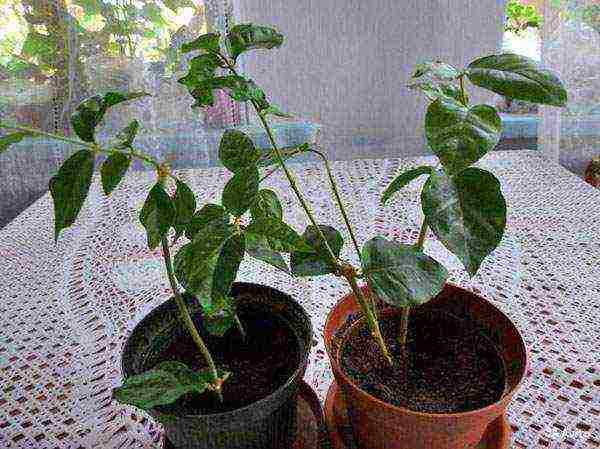 Jasmine is an indoor flower, it will not grow in the open air, under natural disasters and a constant drop in air temperature. To grow a plant and achieve its flowering, it is necessary to provide it with proper care. In practice, there are cases when gardeners put a lot of effort into active growth and flowering of jasmine, and it dies.
Jasmine is an indoor flower, it will not grow in the open air, under natural disasters and a constant drop in air temperature. To grow a plant and achieve its flowering, it is necessary to provide it with proper care. In practice, there are cases when gardeners put a lot of effort into active growth and flowering of jasmine, and it dies.
The reasons for the wilting of a plant can be different:
- Sudden changes in air temperature.
- Finding the plant for a long time in direct sunlight.
- Insufficiently moistened soil.
- Excess moisture in the soil.
- Low air humidity.
Growing jasmine at home is recommended for experienced professionals who can not only grow a plant, but also achieve its constant flowering.
Lighting criteria for indoor jasmine
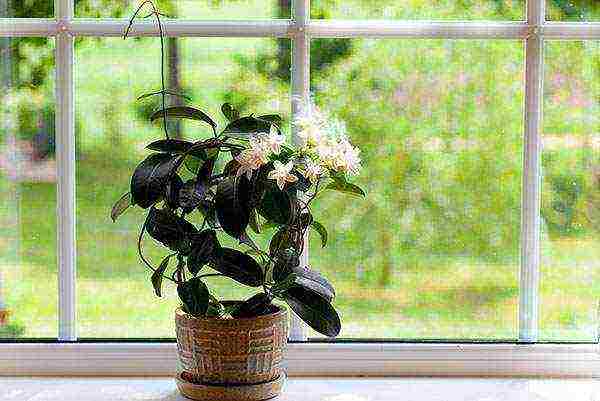 The plant was brought from the tropics, so the flower loves bright rooms. When caring for indoor jasmine at home, you should not put the plant on a windowsill under the influence of direct sunlight as in the photo.
The plant was brought from the tropics, so the flower loves bright rooms. When caring for indoor jasmine at home, you should not put the plant on a windowsill under the influence of direct sunlight as in the photo.
Under the influence of light, the plant begins to sprout, dissolves a lush deciduous crown and blooms for a long time. Jasmine dries up and withers when exposed to direct sunlight. Jasmine propagation is possible on bedside tables near the window. This is the most illuminated place in the room. Under the influence of artificial light, the plant will not bloom and let new leaves.
Some varieties of jasmine shed most of their foliage from late autumn to mid-spring (during the period of decreased solar activity) and sleep, gaining strength.
Maintaining the temperature for breeding indoor jasmine at home
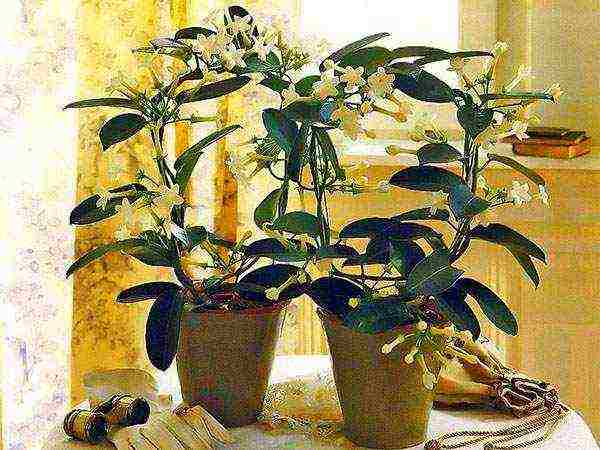 When maintaining the temperature in the room from 21 to 26 degrees Celsius, indoor jasmine, with good care at home, will grow and bloom as in the photo.
When maintaining the temperature in the room from 21 to 26 degrees Celsius, indoor jasmine, with good care at home, will grow and bloom as in the photo.
The plant does not tolerate sudden changes in the temperature of the air around it. When readings on a room thermometer are below 15 degrees, jasmine can not only dull in development, but also wither completely. Depending on the type of flower, it tolerates winter in different ways.
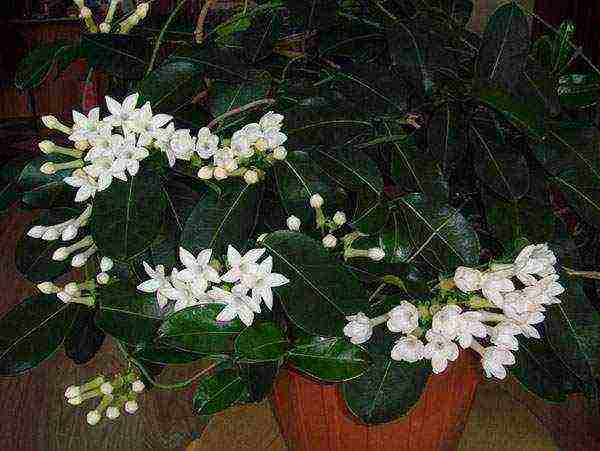 Jasmine - sambac loves to spend the winter in warm temperatures. During the period of rest from flowers, a temperature of 18 degrees Celsius of the surrounding air is enough for him. In order for the plant to begin to bloom profusely and for a long time, gardeners prefer to give the plant a temperature shake and hold it for several hours at a thermometer reading of 10 degrees. In this case, the humidity of the air must be very high. Having been in such conditions, jasmine will bloom in the near future, and will delight the gardener with its appearance for a long time.
Jasmine - sambac loves to spend the winter in warm temperatures. During the period of rest from flowers, a temperature of 18 degrees Celsius of the surrounding air is enough for him. In order for the plant to begin to bloom profusely and for a long time, gardeners prefer to give the plant a temperature shake and hold it for several hours at a thermometer reading of 10 degrees. In this case, the humidity of the air must be very high. Having been in such conditions, jasmine will bloom in the near future, and will delight the gardener with its appearance for a long time.
How to properly prune indoor jasmine at home
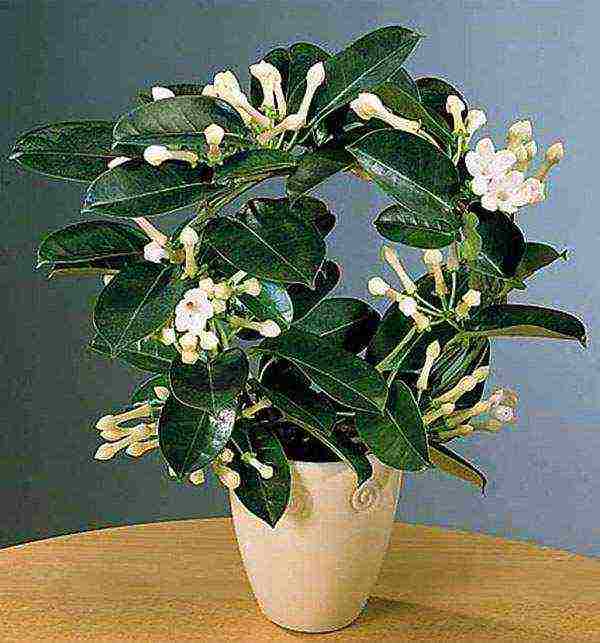 Jasmine pruning is done regularly. The plant tolerates crown formation well. Professional gardeners give the plant a new look during the period of abundant flowering. The main pruning of branches and foliage is done in the spring. During this period, the plant (depending on the species) gains strength and begins to grow fruitfully.
Jasmine pruning is done regularly. The plant tolerates crown formation well. Professional gardeners give the plant a new look during the period of abundant flowering. The main pruning of branches and foliage is done in the spring. During this period, the plant (depending on the species) gains strength and begins to grow fruitfully.
Having given the correct shape to jasmine, you can achieve intensity in growth and long-lasting flowering with an unforgettable aroma. The photo shows the plant after spring pruning.
The branches of the plant are cut in half. This method helps the plant to release more young twigs. Particular attention is paid to dry branches, leaves and possibly remaining flowers.
How to propagate indoor jasmine
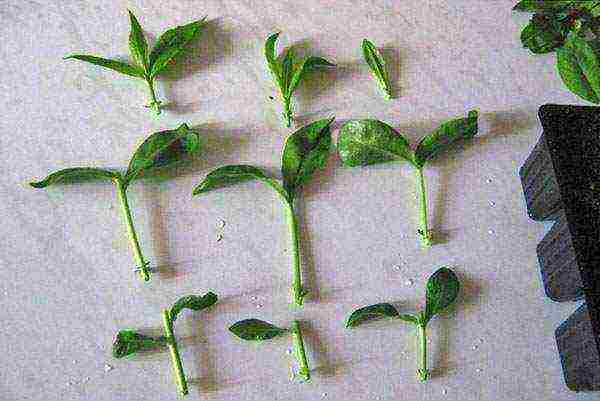 To propagate a perennial houseplant at home, you must properly cut the cuttings. They are prepared in the warm season, during the period when jasmine is resting from flowering.
To propagate a perennial houseplant at home, you must properly cut the cuttings. They are prepared in the warm season, during the period when jasmine is resting from flowering.
How to plant jasmine? The cut young twigs are planted in small pots filled with a mixture of fertilized soil and sand. The stalk is inserted into a specially prepared soil with a cut cut down to a depth of two centimeters.
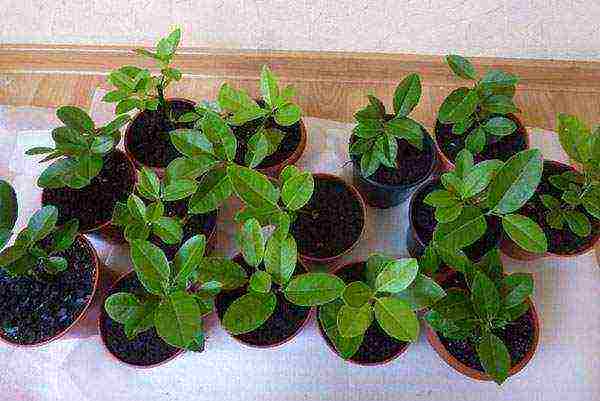 If the air temperature in the room is maintained at least 20 degrees Celsius, the cuttings will begin to take root in one month.After the small pot is completely filled with the root system of the plant, the jasmine must be transplanted into a larger container. With active growth, the plant requires a transplant once a year. When the jasmine is three years old, it will need to be cared for like an adult flower. The plant can be pruned, cut off cuttings for further propagation, and replanted every two and a half years.
If the air temperature in the room is maintained at least 20 degrees Celsius, the cuttings will begin to take root in one month.After the small pot is completely filled with the root system of the plant, the jasmine must be transplanted into a larger container. With active growth, the plant requires a transplant once a year. When the jasmine is three years old, it will need to be cared for like an adult flower. The plant can be pruned, cut off cuttings for further propagation, and replanted every two and a half years.
Jasmine cuttings do not need to be placed in a glass of water for root development. An individually small pot with fertilized soil is sufficient.
Tips for the care of indoor jasmine - video
3 parts: Planting jasmine Jasmine care Harvesting jasmine
The star-shaped jasmine flowers have an exotic sweet scent that permeates the air on warm evenings. Jasmine vines or bushes (depending on the variety) bloom all summer. Jasmine buds can be dried and added to tea for aroma and healing effects. Go to the first step to learn how to plant, grow and harvest jasmine.
Part 1 Planting jasmine
- Choose a jasmine variety.
There are over 200 varieties of jasmine, each with its own characteristics. Some are evergreen, while others are deciduous. Some have vines, others grow as bushes. Some are so delicate that they can only grow at home, while others are hardy. Buy a jasmine variety that suits your needs. You can buy ready-made seedlings in pots or grow your own from seeds. The following jasmines are the most common:
Jasminum officinale (summer jasmine) From bright sun to partial shade; in mild climates can grow outdoors; otherwise grown at home White flowers in the form of stars; the vine is frost-resistant, which makes the variety popular in many regions. Jasminum nudiflorum (winter jasmine) From bright sun to partial shade; grows outdoors in most regions Yellow flowers; undemanding in care; covers the ground well Jasminum parkeri From bright sun to partial shade; in mild climates can grow outdoors; otherwise grown at home Yellow flowers; grows in a bush. Jasminum fruticans From bright sun to partial shade; in mild climates can grow outdoors; otherwise grown at home Yellow tubular flowers; evergreen bush. Jasminum sambac From bright sun to partial shade; home grown, unless you live in a tropical climate Fragrant flowers can be used to create delicious teas; most regions require a controlled home environment. - Find the right place for your jasmine.
Each jasmine variety requires different cultivation conditions, so do your research and determine what conditions your plant needs. For the jasmine to thrive, it should be provided with sufficient sunlight and the correct temperature. Consider the following when choosing a location for jasmine:
- What kind of lighting does he need? Most jasmines require partial shade or full sun, although several varieties allow for shade.
- Is the plant hardy in your climate? Decide if your chosen jasmine will survive outdoors, or if it is better to keep it in a pot at home, where you can control the temperature and humidity. If you are planting jasmine outdoors, then you should find the warmest place for it.
- How much space does a jasmine need? Some varieties of vines outgrow walls and fences, others creep along the ground to create a carpet, and still others grow as bushes. Choose a location according to your type of jasmine.
- Prepare the soil for planting.
Most jasmine varieties thrive in fertile soil with good drainage. Whether planting outdoor jasmine or potted jasmine, prepare the ground by covering it with a 5 cm layer of compost. This will ensure healthy jasmine blooms during the growing season.
- If you are planting jasmine outdoors, check if there is good drainage in the area. Dig a hole and fill it with water. If the water quickly leaves the hole, then the soil drainage is good. If the water stagnates and leaves slowly, choose a different planting site.
- Plant jasmine.
Remove the seedling carefully from the container and water the root ball. Dig a hole the size of a root ball and plant the plant in it. Lightly compact the soil around the plant to help it settle down. Add more soil as needed to keep the plant upright.
- Although it is easiest to buy jasmine seedlings, it is possible to grow jasmine from seeds. Jasmine seeds have low germination and require special care, depending on their variety. In most cases, you can germinate seeds at home in pots with a special seed germination mixture, and then plant the seedlings outdoors after the spring frost.
- Another way to propagate jasmine is to use half-ripe cuttings of adult plants. In mid-summer or autumn, cut twigs 15 cm long from a healthy plant. Prepare a pot of soil and compost and stick the cuttings into it. Keep the pot in a sunny window during the winter, water well, and transplant the plants in the spring.
Part 2 Jasmine care
-
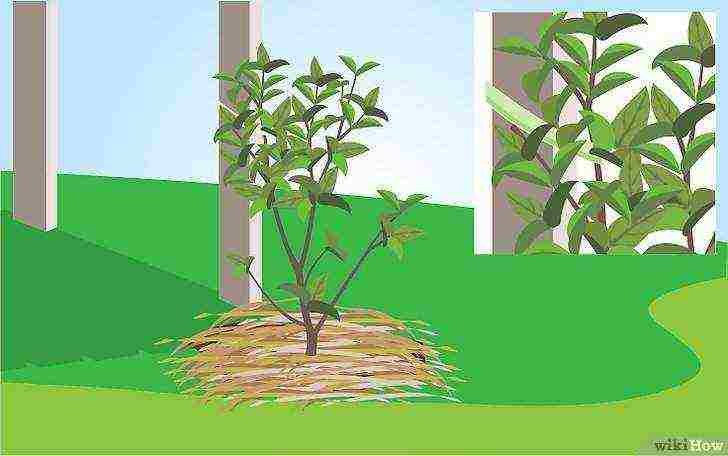 Support the curly jasmine.
Support the curly jasmine.
Many varieties of jasmine need support for healthy growth. Place a tall peg or mesh support a few centimeters from the base of the jasmine, gently wind the plant around the support as it grows. In the end, it itself will begin to braid the support. If you planted jasmine against a wall or fence, guide it upward until it continues to grow in that direction.
- To ensure the fixation of the jasmine on the support, you can use ropes, loosely tying the shoots to the support. Remove the strings when the vine hardens.
-
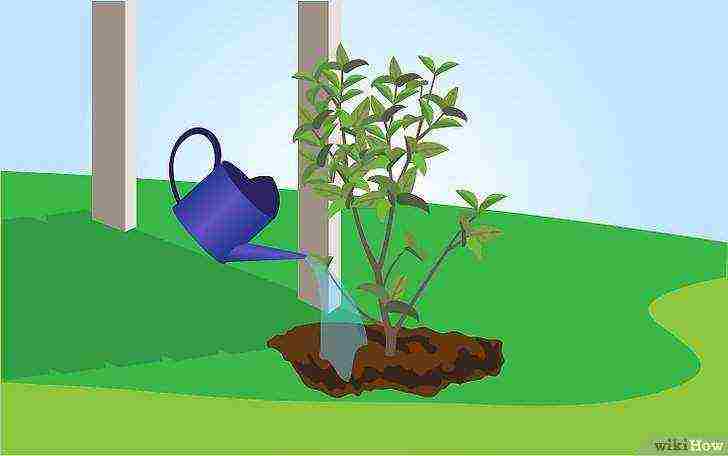 Maintain a humid environment.
Maintain a humid environment.
Water the ground around the jasmine throughout the growing season to keep it moist and not soggy. A good rule of thumb for watering jasmine is to water only when the soil begins to look and feel a little dry. If your jasmine is growing in a pot, it should be watered with an adequate amount of water once a day.
- Water the bottom of the jasmine to keep the leaves from getting wet. If water remains on the leaves, the sun will burn them out during the hottest part of the day.
- For home-growing jasmines, be aware of the humidity level in the air, as well as the moisture content of the soil. The pampered varieties of jasmine need a moisture level in the range of 30–45%. Use a humidifier or spray your plant with a spray bottle regularly.
-
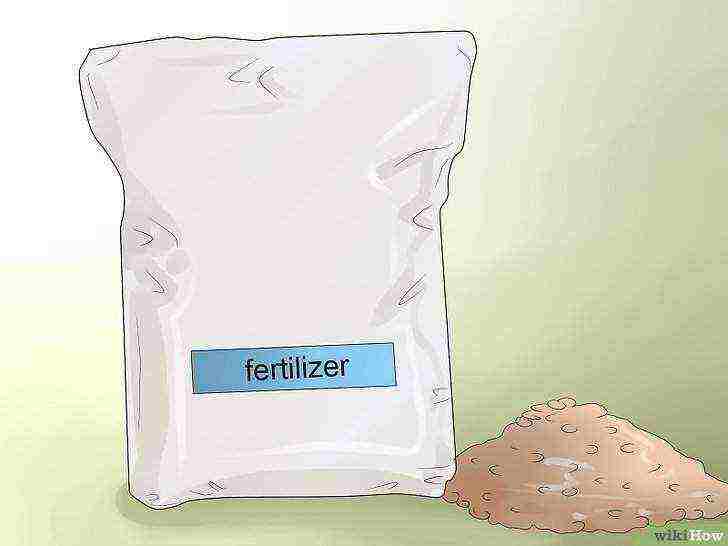
Fertilize your jasmine once a month. During the growing season, monthly fertilization will keep it blooming. Spray a balanced water-soluble fertilizer around the base of the jasmine. Alternatively, you can renew the 2.5 cm compost layer around the plant. Be careful not to damage the roots.
-
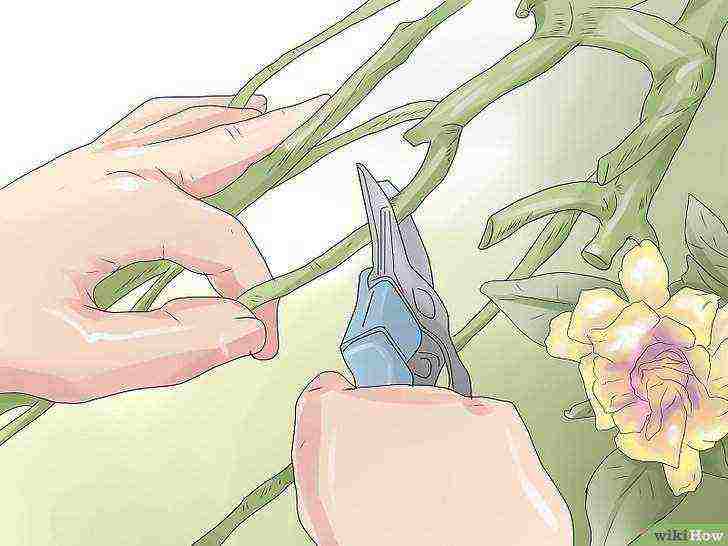 Prune jasmine.
Prune jasmine.
During the growing season, remove dead leaves, flowers, and stems by pinching them or cutting them flush with the main stem. Keep an eye on the type of plant by removing stray shoots. Strategically pruning branches will allow you to control the shape of the vine. Shrubs and homemade jasmine need less pruning to maintain their shape.
- Do not prune before or during flowering as this may stop it. Wait for the end of flowering.
- To maintain the bushy form of jasmine, you can trim its stems one third after flowering. The bush will become more lush next year.
-
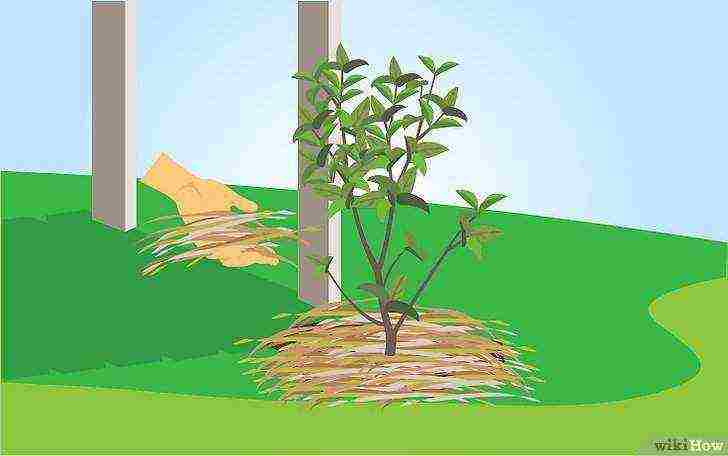 Mulch the jasmine in the fall.
Mulch the jasmine in the fall.
To protect the jasmine for the winter, spread a layer of pine needles, manure, or garden compost around the base. This will prevent the root system from completely freezing, and the jasmine will be able to start growing when it gets warm.
- If you grew jasmine outdoors in a pot, you can bring it indoors for the winter instead of mulching.
- Jasmine growing all year round at home does not require mulching. However, it is important to keep it in a sunny room with a constant temperature of 15.5-24 degrees.
-
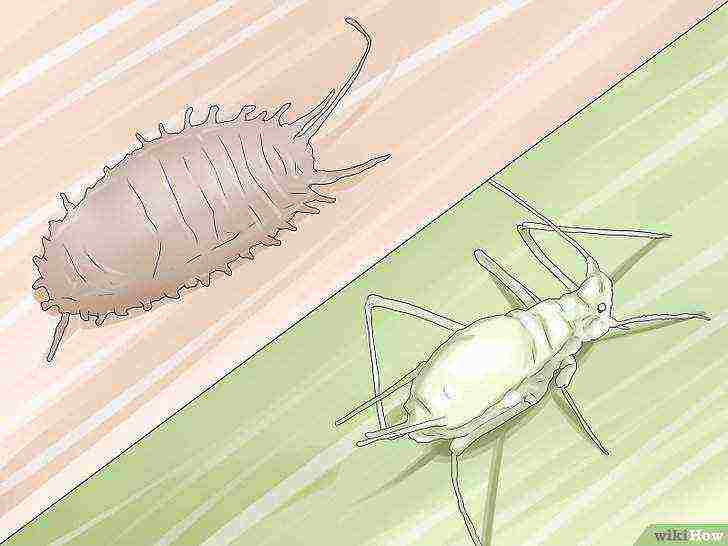 Pay attention to pests.
Pay attention to pests.
Although jasmine usually does not suffer from pests, it is a good idea to inspect it for the presence of certain insects that can affect its growth. If you see the following insects on jasmine, pick them up by hand and fill them with soapy water, or wash with soapy water or a solution of water and neem oil:
- Aphid
- Mealybug
- Red spider mite
- Soft shield
Part 3 Collecting jasmine
-
 Cut the jasmine for a vase.
Cut the jasmine for a vase.
A jasmine vine or bush gives a lot of flowers in a season, you can decorate with them the situation. Use pruning shears to cut off abundantly flowering branches with leaves. Put them in water immediately to keep them fresh.
-
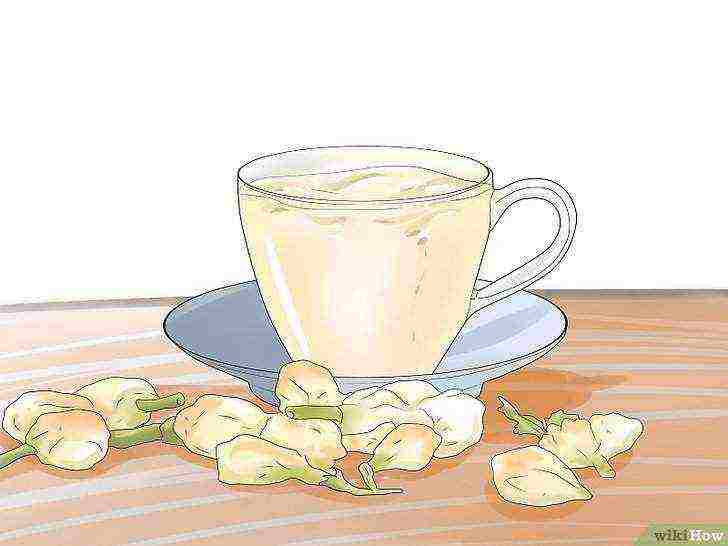 Collect jasmine buds for tea.
Collect jasmine buds for tea.
When jasmine blooms in spring and summer, you can make your own jasmine tea. Jasmine tea has healing properties, especially when combined with green tea.
Follow the steps below to make your own tea.
- Collect the buds of the plant early in the morning. Their aroma is richer at this particular time.
- Arrange them in one layer on a baking sheet.
- Heat the buds in the oven at the lowest heat setting (90 degrees or less). You can also dry the buds in a sunny window or dry room.
- Dry the buds completely. It will take about 3 hours in the oven. Try not to dry them in the oven.
- Leave the buds in a baking sheet overnight before storing them.
- Store buds in a tightly closed container. When you need tea, add 1 teaspoon of the buds to boiling water. Leave to simmer for 4 minutes, then strain and enjoy the tea.
-
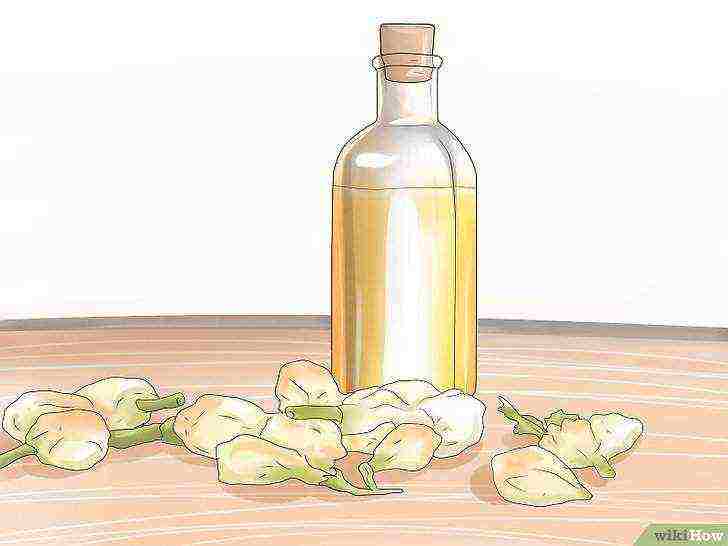 Use jasmine buds to make oil.
Use jasmine buds to make oil.
If you want to use the strong, sweet scent of jasmine as a perfume, you can make oil from the buds. You will need a glass jar with a tight lid and a base oil of your choice. Almond, olive, castor, jojoba are suitable.
Follow the procedures below to prepare the oil.
- Collect 1/4 cup fresh buds in the morning.
- Place the buds in a plastic bag and gently tap them with a hammer to release the oil.
- Place the buds in a jar and pour in ½ cup of base oil. Close the jar and leave in a cool, dark place for 24 hours.
- Strain the buds and sniff the oil. If you need a stronger aroma, repeat the process with fresh buds. Continue adding buds to the oil until you achieve the desired fragrance strength.
- Pour the oil into a dark glass bottle for long term storage. The oil can be used as a perfume or added to lotion, lip balm, and more.
Tips
- Jasmine can be propagated by apical cuttings in the summer.
- Under the right conditions, jasmine can grow to enormous sizes. Jasmine needs pinching to control growth. Prune the jasmine after flowering and throughout the summer to keep the long vines from getting tangled if they are not growing up the supports or trellises.
- Not all types of jasmine are scent. If scent is important to you, choose the appropriate variety.
- Plant jasmine close to your home, porch or walkway to enjoy its rich aroma and admire the butterflies it attracts.
- Use a phosphate-rich fertilizer to maximize flowering.
What do you need
- Jasmine seedlings
- Garden shovel
- Gardening Gloves
- Compost
- Scoop
- Ties for tying plants
- Pine needles
Article Information
Categories: Gardens and vegetable gardens
In other languages:
English: Grow Jasmine, Español: cultivar jazmines, Italiano: Coltivare il Gelsomino, Português: Cultivar Jasmim, Deutsch: Jasmin anpflanzen, Français: faire pousser du jasmin, Bahasa Indonesia: Menanam Melati, Nederlands: Jasmijn kweken, Nederlands: Jasmijn kweken, Deutsch語: ジ ャ ス ミ ン を 育 て る, Tiếng Việt: Trồng hoa nhài
- Seal
- Edit
- Write a letter of thanks to the authors
This page has been viewed 28,035 times.
Was this helpful?
|
How to Grow Jasmine from Seeds? Someone has grown to share your experience, my daughter ordered seeds, but we don’t know how to plant. Similar questions:See also:
Your response:If you want to add a comment to the question or check with its author for details - not use this form, and click "Clarify / discuss the question" under the question text! |
Here you can ask questions, |
Stefanotis (Madagascar jasmine) home care, cultivation and transplantation, reproduction
Stefanotis (Madagascar jasmine): home care, cultivation and transplantation, reproduction
Video: a memo for loving owners of stephanotis
Stephanotis is a beautiful tropical plant that is used at home to decorate large rooms and halls. Observance of the requirements for caring for the plant, which are important for the plant, will make it possible to admire the juicy, shiny foliage and fragrant flowers of the climbing liana all year round. If you want to make Stephanotis bloom, do not forget to provide him with winter peace, do not repot it again, cut and feed in spring, but make sure that there is no excess nitrogen in the soil and fertilizer. This vine has long creeping stems, and with the correct formation of their growth, various green compositions are created with the help of supports, from compact to filling the entire space of the room with the luxury of a tropical forest.
How to grow jasmine from seeds or cuttings - planting and care
How to grow jasmine from seeds or cuttings - planting and care
Garden jasmine is considered to be one of the most beautiful shrubs. Due to its lush foliage, it is often used as a hedge. And its ability to bloom throughout the summer attracts flower growers. What's more, its fragrant flowers can be used to make delicious tea.
How to grow jasmine from seeds or cuttings? Almost all seeds that are used for reproduction require stratification. In the case of chubushnik, the seeds are mixed with prepared soil, consisting of part of river sand and part of peat. The moistened mixture is distributed in pots and removed to a cool place for 1.5-2 months. The air temperature should be low enough, not higher than +2 degrees. Periodically, the mixture should be moistened so that mold does not appear or the earth does not dry out.
In the spring, the seeds are sown in the prepared soil in boxes.And they are sent to a warm, bright room. Moisten periodically using a spray bottle or a fine-mesh watering can. The first shoots will appear on the 10th day. When the leaves appear and the seedlings get stronger, they can be dived into the open ground. Juveniles are very susceptible to direct sunlight and heat. Therefore, in the first summer, they should be shaded and make sure that the soil does not dry out on dry days.
If you want to propagate varietal jasmine, then it is better to use the vegetative method here. Use green cuttings. Well-developed shoots of one year old are cut off with a heel from the old branch. Take only those shoots that do not have a hollow core inside. Since putrefactive processes can form there. Cuttings are planted in containers with prepared nutrient soil. And they are sent to a warm bright room or greenhouse. During rooting, cuttings require diffused light and good moisture. Therefore, they should be sprayed periodically.
Youngsters should be planted on well-prepared soil, in places with high humidity, but not persistent and not swampy. A place should be chosen with good lighting. Already matured shrubs feel great in direct sunlight, grow luxuriantly and bloom profusely.
With good care, the bushes develop quickly enough. If the crown thickens too much, jasmine must be thinned out. Young shoots bloom much more abundantly. Pruning and crown formation should be done in early spring. And then the chubushnik will delight you with its fragrance and lush flowering all summer long.
You might also like:
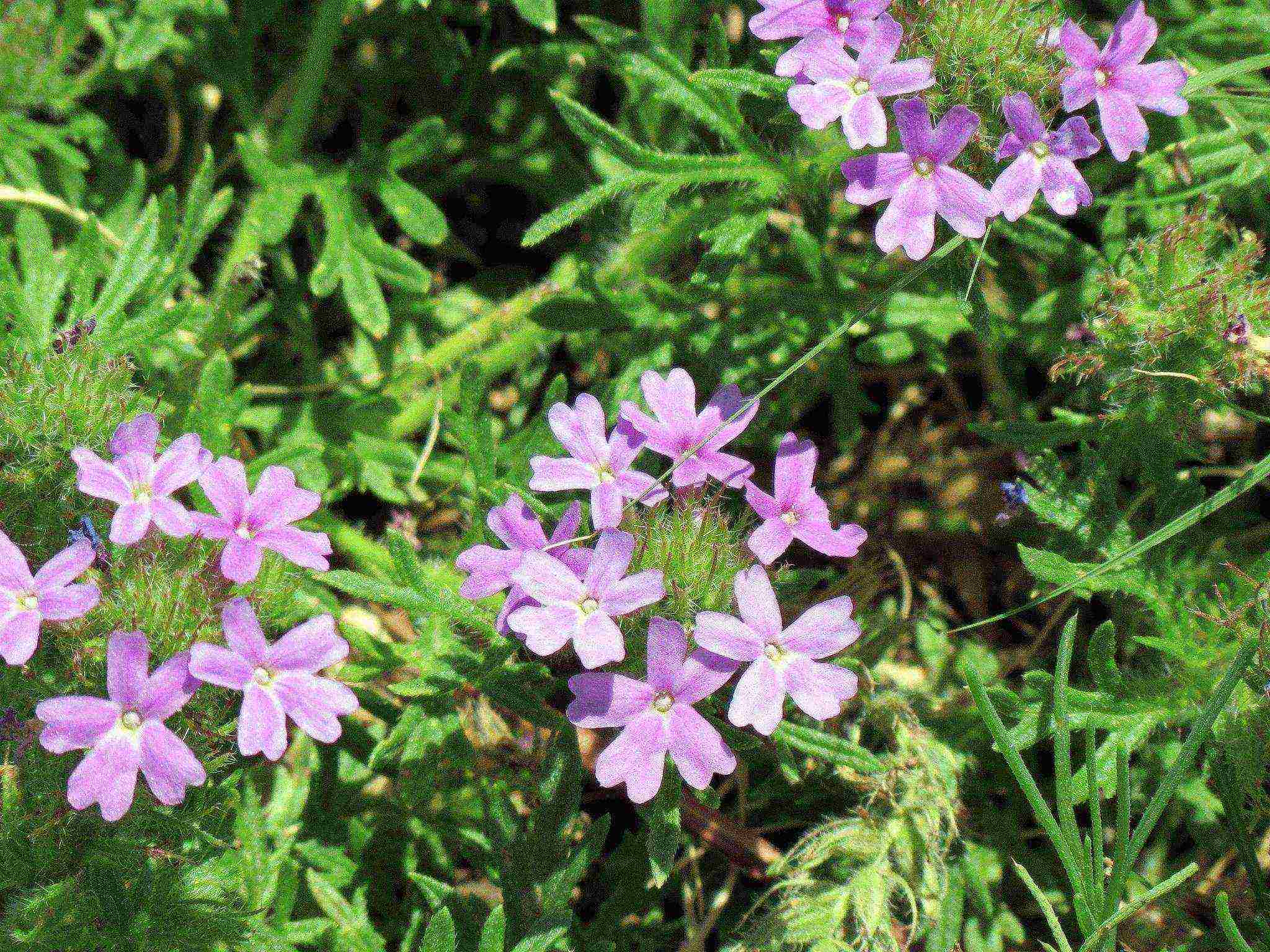 How to grow verbena from seeds at home - planting and care
How to grow verbena from seeds at home - planting and care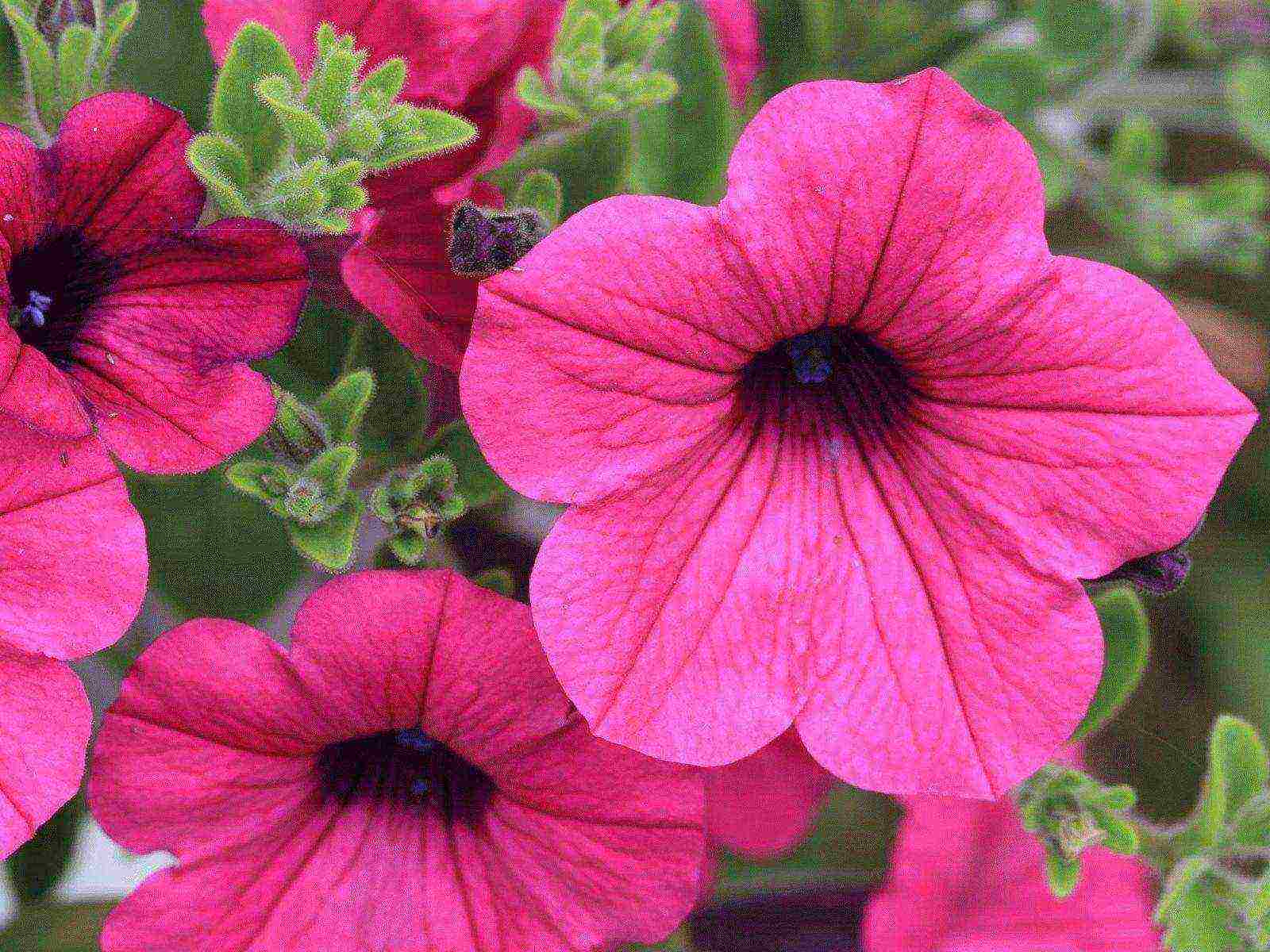 How to grow ampelous petunia from seeds at home for seedlings
How to grow ampelous petunia from seeds at home for seedlings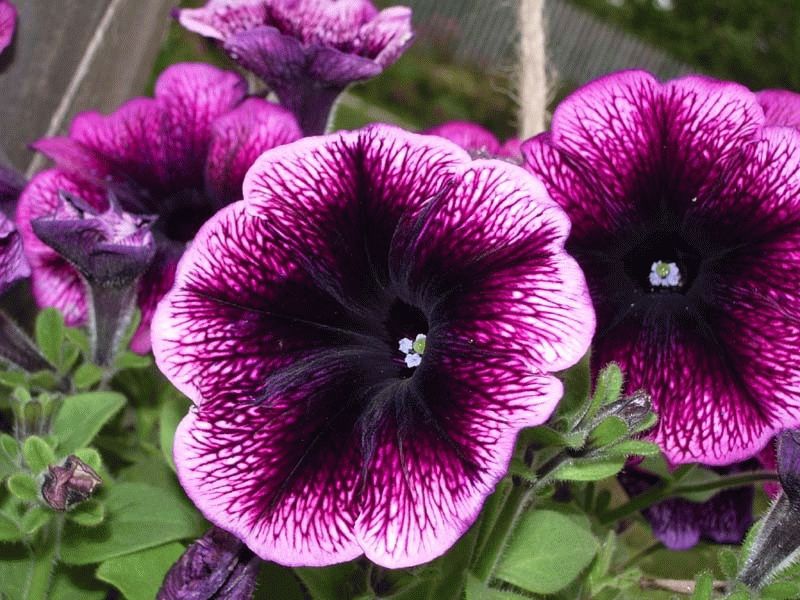 How to grow healthy petunia seedlings - planting and care
How to grow healthy petunia seedlings - planting and care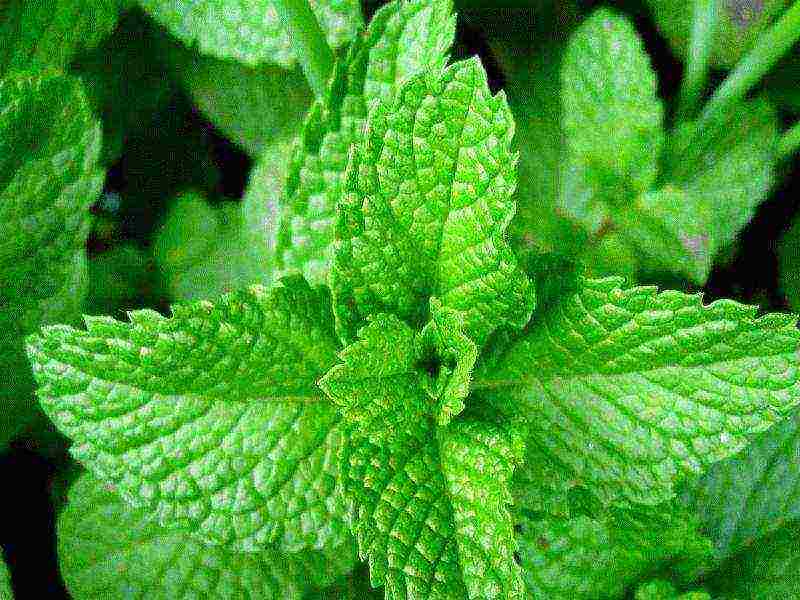 How to grow tarragon from seeds at home and in the country - planting and care
How to grow tarragon from seeds at home and in the country - planting and care How to grow a hybrid tea rose from a cutting - planting and care
How to grow a hybrid tea rose from a cutting - planting and care How to grow evening primrose from seeds at home and in the country - planting and care
How to grow evening primrose from seeds at home and in the country - planting and care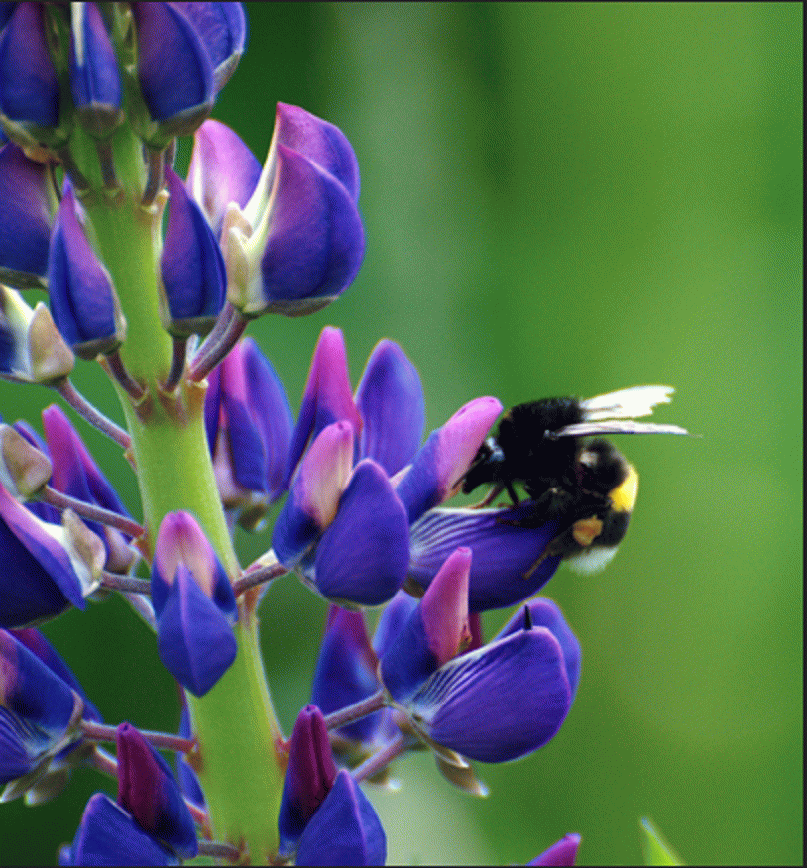 How to grow perennial lupine from seeds - planting and care
How to grow perennial lupine from seeds - planting and care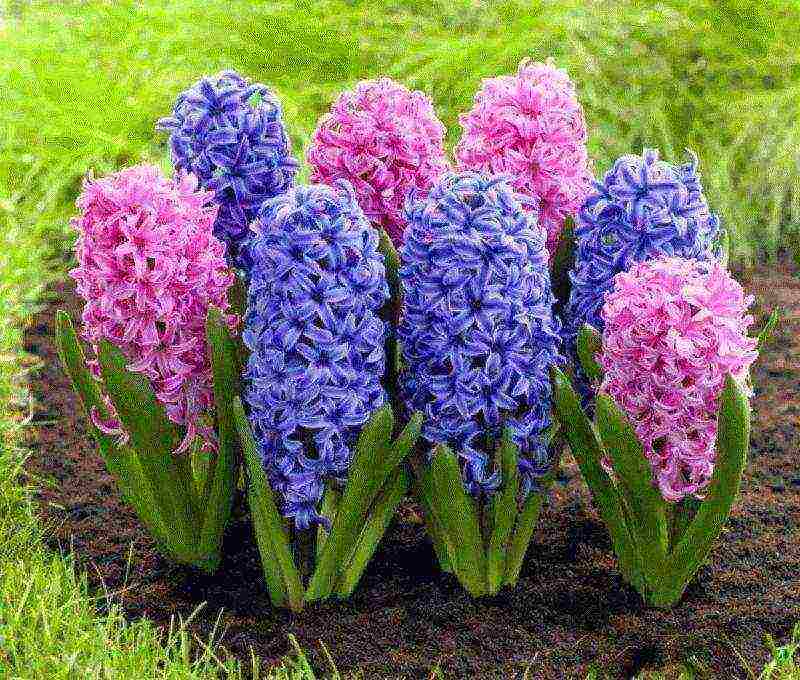 How to properly care for hyacinth before and after flowering? Ipomoea annual and perennial - planting and care
How to properly care for hyacinth before and after flowering? Ipomoea annual and perennial - planting and care
Indoor jasmine flower home care photo
Indoor jasmine flower: home care + photo!
In winter (dormant period), multi-flowered (polyantum) and large-flowered jasmine should be transferred to a cool place, the optimum temperature is 10-12 ° C. If it is warmer, then in spring and summer they will not bloom or they will bloom little and weak.
If it is not possible to lower the temperature in the room or put it in a cool place, then spray more often to increase the humidity.
Jasmine sambac does not need a cold winter, keep it warm at 18-23 ° C.
The lower limit of the permissible temperature is 8 ° C, regardless of the season, otherwise the flower may die.
 Jasmine sambac - flowering
Jasmine sambac - flowering
AIR HUMIDITY
In caring for jasmine, maintaining high humidity is an important factor. Low humidity inhibits the plant, makes it more vulnerable to diseases and pests, and also disrupts flowering.
In the spring and summer, spray indoor jasmine every 1-2 days with soft water, and if it is very hot and dry, then you can in the morning and evening.
In winter, the air is often dry from working heating devices, and the temperature is higher than necessary - spray it every 2-4 days. During flowering, you need to be very careful so that drops of water do not fall on the flowers, cover them with a cloth or hand.
In addition to spraying, use humidifiers or traditional methods. Put a wet towel on the battery, place a container of water or a pot near the pot on a pallet with wet pebbles, expanded clay.
Attention! In the case of a cool wintering, the flower cannot be sprayed, as well as increase the humidity in any other way.
THE SOIL
Jasmine needs a loose and well-drained soil with a neutral (sambac) or slightly acidic reaction, pH 5.5-6.5 (large-flowered, multi-flowered (polyantum)). At the bottom of the pot, a 3-5 cm drainage layer is required, depending on its volume.
It is preferable to plant sambac jasmine in a ready-made universal substrate for roses or begonias, and for other species, these soil mixtures must be supplemented with 1/3 of the soil for azaleas.
We recommend reading: “SOIL MIXTURE COMPONENTS FOR INDOOR PLANTS, WHICH IS NECESSARY?
Care for indoor jasmine: watering, feeding, pruning, transplanting
The flower needs proper watering, feeding, pruning and transplanting. We will talk about these aspects of flower care further.
How to properly water indoor jasmine?
In spring and summer, water the flower as soon as the topsoil dries 1-2 cm deep, approximately every 2-4 days. During this time (active growth and high temperature), it is important to keep the substrate in a slightly moist state constantly, without stagnant water and drying out. Starting in September, the need for moisture decreases and it is necessary to gradually reduce the frequency of watering. In autumn and winter, an excess of water is extremely undesirable, especially during cold wintering.
Water indoor jasmine only after the middle layer of the substrate begins to dry out, about once every 4-7 days.
If the room is very hot and dry, then watering is not recommended more often, but it is imperative to spray the plant in order to increase the humidity of the air and it could bloom.
General principle: the higher the temperature and the lower the humidity, the more often you need to water.
Water for watering a flower should be soft, settled and slightly warmer than room temperature.
Every 2nd to 4th watering (1-3 times a month), it is advisable to slightly acidify the water to maintain the optimum acidity of the soil. Add a teaspoon of apple cider vinegar to a quart of water.
In details: «WHAT WATER IS BETTER TO WATER ROOM FLOWERS?».
Top dressing and fertilizers
For a beautiful flowering and good development, the plant needs additional nutrients.
Jasmines blooming in spring and summer need to be fed from April to August. Jasmine sambac from April until the end of flowering.
Feed the flower every 8-12 days with liquid houseplant fertilizer.
We recommend reading:
«TYPES OF FERTILIZERS FOR ROOM FLOWERS». «HOME NATURAL FERTILIZERS - TOP-20!».
How and when to prune jasmine?
The plant responds well to formative pruning, moreover, regular holding is necessary to restrain growth and abundant flowering. Pruning stimulates the growth of new lateral shoots on which flowers appear.
In the beginning to mid-March (before the beginning of the growing season), trim all the shoots to about 40-60% of their length. Remove dry, elongated, damaged and poorly developed shoots completely.
In young indoor jasmine (shoots up to 50-60 cm in length), pinch every month from spring to autumn tops of the shoots so that they bush better.
Attention
Transfer
Young plants need to be transplanted annually using the transshipment method, and from 3-4 years of age, replant every 2-3 years as they grow.
Indoor jasmine is best replanted in spring after flowering (March) and flower pruning. After transplanting, sprinkle the plant, the increased humidity will help to transfer stress more easily.
The new pot should not exceed the size of the previous one by more than 2-3 cm, otherwise there is a high probability of deterioration in the properties of the soil mixture and disruption of flower development. He loves when the substrate is almost completely filled with roots.
See also: «HOW IS IT CORRECT TO REPROT THE INDOOR PLANTS?»
How to make a support and tie a flower?
To grow jasmine, you need to make a support in the form of an arc of wire or plastic. Then tilt the stem to one side of the arc and carefully wrap it around. Tie twine around the stem and support to secure the flower.
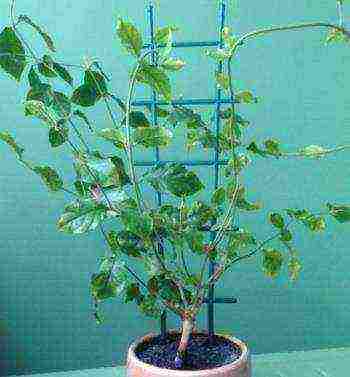 Jasmine support option
Jasmine support option
Reproduction of indoor jasmine
The plant can be propagated by cuttings and layering. Each of the methods has its own merits.
Cuttings
The most productive way, but at the same time laborious and requires certain skills. Jasmine propagation by cuttings is more suitable for experienced florists or for those who need a large number of copies.
It is convenient to propagate indoor jasmine by cuttings in spring after pruning, or from April to July.
In the spring, take a lignified, mature, powerful shoot. Cut off its top with 2-3 internodes, length 10-14 cm, lower cut at an acute angle. For summer cuttings, take young green shoots. Plant the cuttings in a moist soil mixture (peat, sand - 1: 1 or just sand) 1.5-2 cm deep and cover with foil or glass. You can also place the cuttings in a container with water, and after the roots are formed, plant them in a nutritious substrate. Spray and air the cuttings daily. Roots are usually formed after 30-40 days. Plant the plants in separate cups (3-5 cm diameter), potting soil (leafy earth (peat), sand - 3: 1) and place in a bright place without direct sunlight. Spray the plants daily to keep the substrate slightly damp at all times. When the roots are all over the potting mix, transplant the plants into a pot (8-10 cm diameter). Then replant the flower annually until 3-4 years of age.
Rules and Tips
 Rooted stalk of Sambac jasmine
Rooted stalk of Sambac jasmine
Layers
Convenient and easy breeding method. Ideal if you need a small number of young flowers.
In April - May (it is also possible in summer), make a small incision on the extreme shoot, dig it into a small hole and sprinkle it on top with soil. Water the cut site regularly, when the young growth begins to grow (autumn, spring), separate the cut from the mother plant and plant in a separate pot.
For more details, see here: "VEGETATIVE REPRODUCTION OF INDOOR PLANTS - OVERVIEW"
Pests and diseases
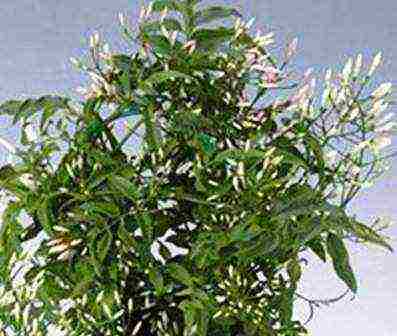
Indoor jasmine is an incredibly beautiful plant on which small white or pale pink buds bloom with the onset of spring. This flower is known not only to flower growers. Almost everyone drank jasmine tea at least once in their life, which has the aroma of plant buds. However, jasmine is a rather finicky plant that requires certain conditions of keeping, pruning and replanting. We will tell you in detail about all the intricacies of caring for a jasmine bush in our article.
Jasmine - home care
Any plant requires attention and certain conditions for growing. So when growing indoor jasmine at home, you must follow some care rules. These include:
- Lighting... A flowering plant loves light, but does not tolerate direct sunlight. Under the scorching sun, the still unopened buds dry up and fall off. The flower will grow best on the windowsills of the east and west windows. The northern windows will have little light, and if the bush is placed near the southern window, then it will definitely need to be shaded.
- Temperature... Indoor jasmine at home should be kept at an air temperature of + 18C to + 25C. One of the conditions for keeping a plant in winter is to lower the temperature in the room to + 8C- + 10C. This is essential for its successful flowering in spring and summer. Only Sambac does not need a cool room.

- Air humidity... On dry and hot days, it is recommended to spray the plant. In summer, it can be taken out into the garden or onto the balcony.
- Watering jasmine... When kept in a warm room, watering should be regular and abundant. Used well-settled soft water at room temperature. The presence of lime in it is undesirable, therefore, if it is present, the water is acidified. To do this, add a few drops of citric or acetic acid. Watering is done only after the topsoil dries out.
- Top dressing... In the spring, with the beginning of the growing season, the plant is fed once every 7-10 days with special complex fertilizers for flowering plants.
- Transplant soil... In flower shops, the plants are sold in transport pots filled with peat. Therefore, after purchasing jasmine, as soon as the flower adapts to new home conditions, it will be necessary to transfer it to nutritious soil. For this, clay-leaf soil and peat (3: 1) or clay-leaf and deciduous soil and sand (1: 1: 1) are mixed. If you can't prepare the soil yourself, you can always buy it. In the future, a young bush will need to be replanted every year, and an adult plant once every two to three years. The new pot should be 2-3 cm larger than the old one.
How to properly prune jasmine?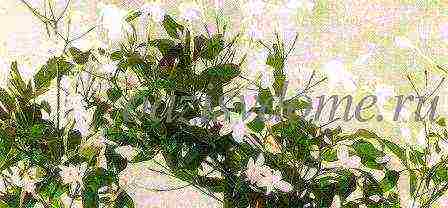
In early spring, so that the bush begins to grow intensively, it is recommended to prune it. After pruning, additional side branches will begin to form, on which fragrant flowers will soon appear and bloom. The bush will turn out to be lush and beautiful.
The pruning procedure takes place in early or mid-March. All shoots on the bush are shortened by 40-60% of the length. Poorly developed, damaged, elongated and dry shoots are removed completely.
In order for a young plant to bush and develop better, it is recommended to pinch its shoots from spring to autumn every month. The branches should remain 50-60 cm long.
Please note that the pruning time of indoor jasmine depends on its type: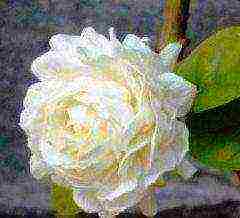
- Sambac requires cutting branches 2 or 3 times a year. Its shoots are cut off quite a bit.
- Powerfully growing shrubs, whose branches grow more than a meter in length per season, are cut off both after flowering and before the start of active growth.
- Jasmines blooming in winter are pruned at the beginning of the growing season in the fall.
Indoor jasmine - reproduction
You can propagate a jasmine bush by layering and cuttings. The easiest and most convenient way is to propagate by layering. But cuttings are more productive, however, it requires certain knowledge and experience.
Jasmine propagation by layering
This method of breeding jasmine can be used in spring and summer. For its implementation it is necessary:
- Make a small incision on the extreme shoot.
- Dig in the shoot in the place of the cut into the hole and cover it with earth.
- The place where the branch is dug should be watered regularly.
- In autumn or spring, when the young growth comes, the cuttings are separated from the bush and planted in a separate pot.
Jasmine propagation by cuttings
After pruning the bush, the remaining cuttings can not be thrown away, but used to propagate jasmine. In summer, young green shoots can be used for cuttings.
Cutting process:
- At a powerful mature shoot, the top with two internodes is cut off. The bottom cut is made at an acute angle. The length of the cutting should be 10 to 14 cm.
- Prepared cuttings are planted in a container with wet sand or a mixture of peat and sand (1: 1). They are dug in to a depth of 1.5-2 cm. The container is closed from above with glass or polyethylene. The petioles can be simply put in water at first, and when they give roots, they can be planted in a nutritious soil.
- Cuttings should be ventilated and sprayed every day. Roots most often appear after about a month. Young plants are planted in separate containers with a diameter of 3-5 cm. The soil for them should consist of peat or leafy soil and sand (3: 1). You can use potting mix from the store.
- Plants are exposed in a well-lit place without direct sunlight. It is necessary to ensure that the soil is wet at all times. For this, daily spraying will be sufficient.
- When the roots grow and it will be seen that they have braided the entire substrate, the young bush is transplanted into a pot with a diameter of 8-10 cm.
Propagated by cuttings, jasmine up to three or four years of age is transplanted into a new pot a little larger than the previous one every year.
Jasmine pests and diseases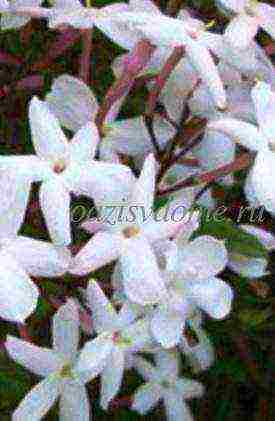
The flower can be affected by aphids, indoor mites, leaf weevils. All these pests feed on the sap of the plant, which begins to wither and shed its leaves, and stops blooming. If you do not identify pests in time and do not get rid of them, then the plant may die. Therefore, the leaves need to be inspected regularly:
- the aphid is quite large and is located on the tops of the shoots;
- spider mites can be recognized by the presence of cobwebs and small dots between the leaves or on their back side;
- weevils live in the soil, and their larvae, similar to caterpillars, feed on the sap of the leaves.
Pest control should be done with special insecticidal preparations, which are used according to the instructions attached to them.
Why jasmine does not bloom or care errors
If the flowering of the bush is poor or you did not wait for it at all, then you should reconsider the content of jasmine and its care.
Common reasons for the lack of flowering:
- the room is too low or, conversely, the temperature is too high;
- jasmine does not have enough lighting to bloom;
- direct sunlight falls on the bush, as a result of which its leaves get burned, and the buds dry out and fall off;
- the earthen lump dries up all the time and the plant does not have enough moisture for the growth and development of buds;
- in excess amount in water, which means that lime is present in the soil;
- the flower has not been fed for a long time, therefore, it lacks nutrients for flowering;
- the neck of the trunk when planting the plant was deepened by more than 3 cm;
- the bush is infected with pests or is sick.
After reviewing the care and correcting mistakes, you will definitely wait for the buds to bloom on the jasmine bush. However, it is not recommended to put a jasmine pot in the bedroom. The scent of its flowers can give you a headache. It is best if a beautiful flower becomes a decoration of the kitchen or living room.
